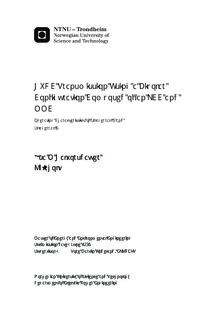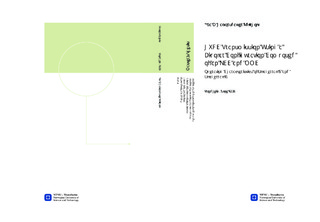| dc.description.abstract | The operational properties of a bipolar configuration composed of a Line-Commutated Converter (LCC) and a Voltage Source Converter (VSC) in a multilevel topology (MMC) are investigated. Simulation models are made in the PSCAD software in order to represent the two bipolar HVDC-links between Norway and Denmark, named Skagerrak 3 and Skagerrak 4. The topology combines two fundamentally different converter technologies with an intricate switching scheme for the function of power reversal.The objective of this thesis is to validate the three simulation models; a monopolar LCC model, a monopolar Modular Multilevel Converter (MMC) model, and an LCC-MMC model in a bipolar configuration. By investigating the interaction of the combined LCC model and MMC model, a better understanding of the challenges of the bipolar link is achieved. The steady state behaviors of the three systems are as expected based on the theory. The LCC consumes reactive power, and require reactive power compensation and filtering. When combined with the MMC, the MMC is able to provide the reactive power consumption by the system. There is an interaction between the MMC and the passive filters of the LCC, resulting in the need to redesign the filters in the bipolar configuration. Also, the DC voltages in the combined model are found to be divided somewhat unevenly between the HVDC-links.When a three-phase to ground fault is applied to the inverter side of the models, the LCC suffer from failure of commutation. This is due to the reduction in the AC voltage, and is to be expected. A DC chopper is placed at the MMC DC-link and reduces the DC voltage overshoot significantly during the fault. When the LCC and MMC systems are combined, they operate in an independent manner, and as a result, no additional protection arrangements are necessary.A single-phase to ground fault at the inverter side of the models, gives rise to harmonic disturbances due to the unbalance of the fault. The reduction in AC voltage results in failure of commutation at the LCC inverter side. The LCC and MMC systems are still almost unaffected by each other during the fault, and so no additional protection systems are required for the combined model.Finally, a DC pole to ground fault is applied to the three simulation models. The LCC model does not recover from the fault, because of loss of controllability in the PI controllers. There are solutions for this problem, for example anti-windup PI controller. An interesting result is observed when the two models are combined into the bipolar configuration. The MMC is able to support the LCC in such a way that it recovers. DC breakers are required for high voltage and current spikes during the DC fault at the MMC link. The LCC and MMC systems are no longer operating independently, and different protection strategies must be implemented when compared to the monopolar models. | nb_NO |

